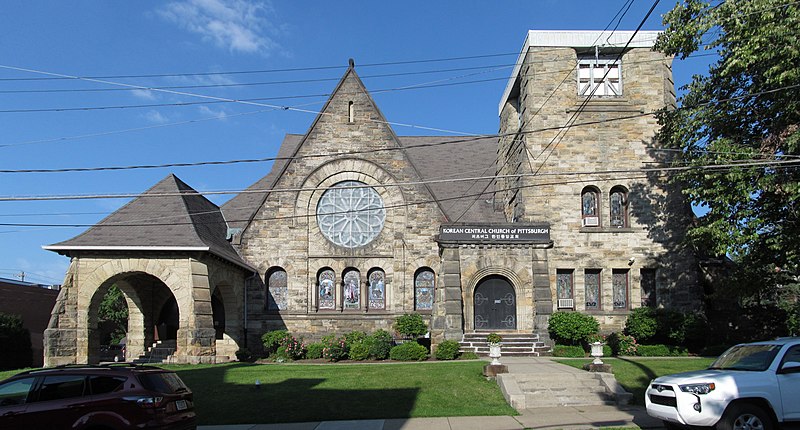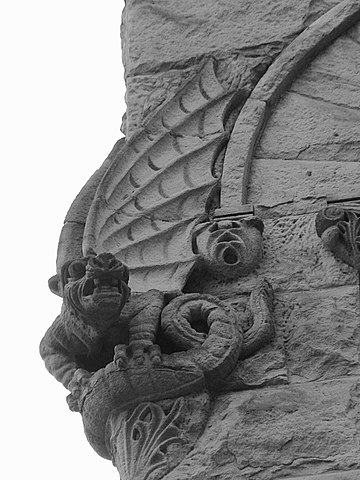
This building began its life as the First Methodist Protestant Church; it later passed into the hands of the Seventh Day Adventists, and now belongs to a nondenominational Korean congregation. It is a work of Frederick Osterling in his typically florid Romanesque style. Obviously the spire has had a bit of bad luck, but the rest of the exterior is in pretty good shape.



This modest but tasteful house seems to be the parsonage for the church, and Father Pitt can easily imagine that it was designed by Osterling as well. He would be happy to have his speculation corrected or confirmed. Update: Father Pitt’s speculation was wrong. The architect of the parish house, built in 1914 or so, was H. E. Kennedy.1
- Source: The Construction Record, May 2, 1914: “Plans are being prepared by Architect H. E. Kennedy, Home Trust building, tor the erection of a stone parish house on Howe and Aiken streets, for the First Methodist Protestant Congregation. Cost $15,000.” ↩︎


















